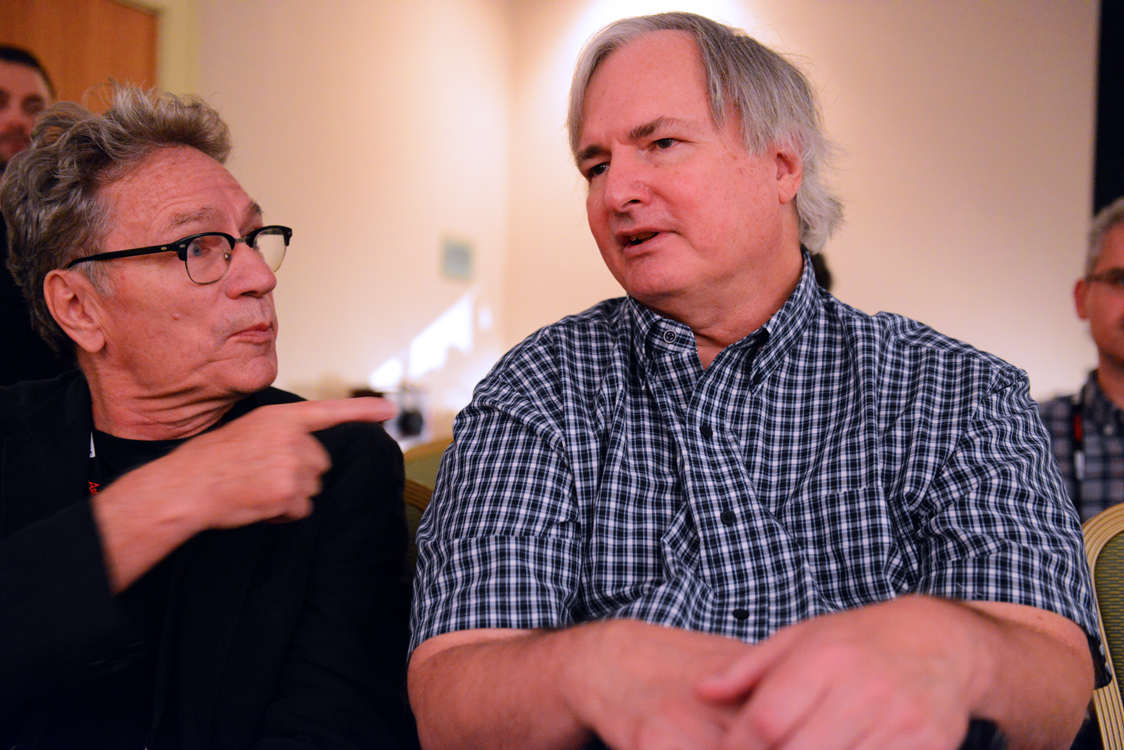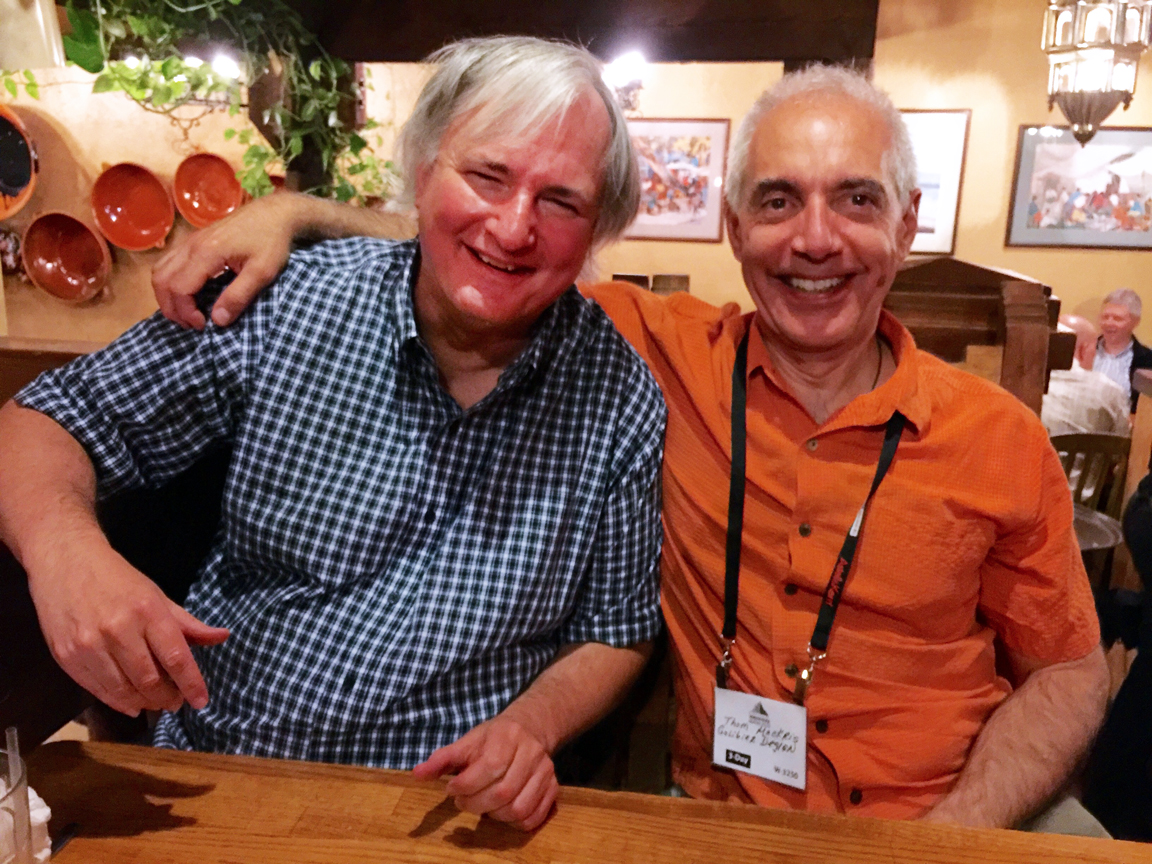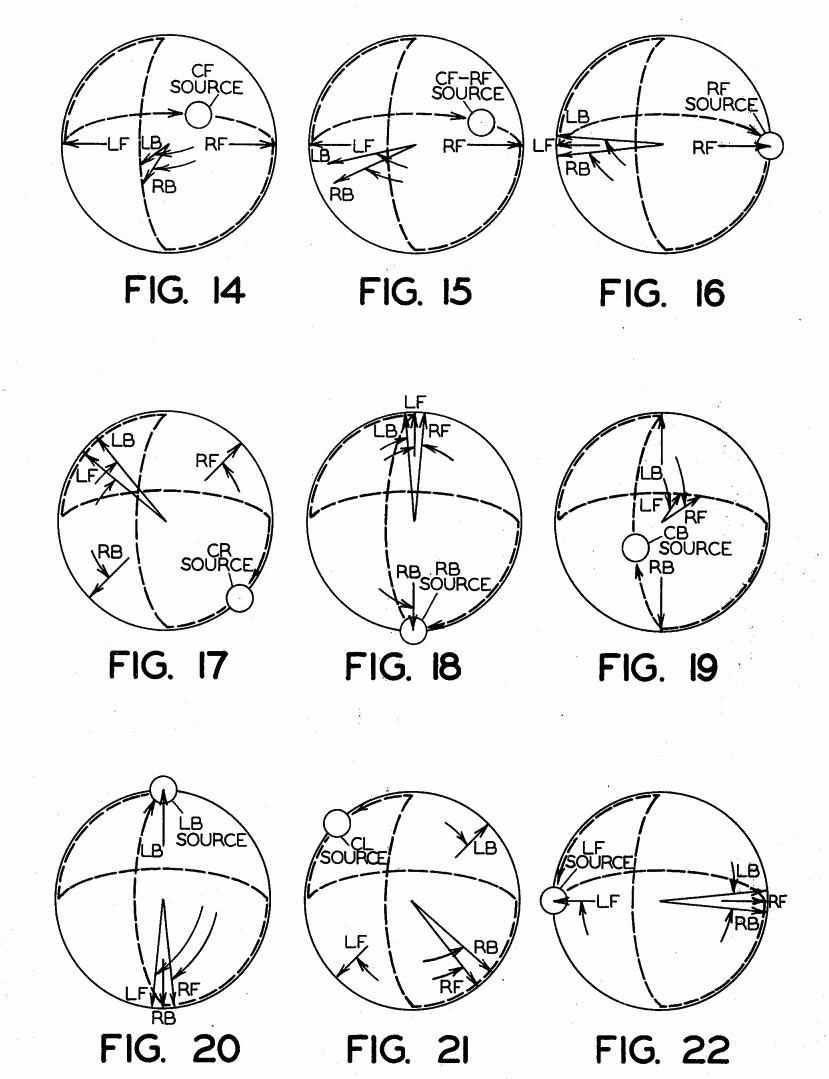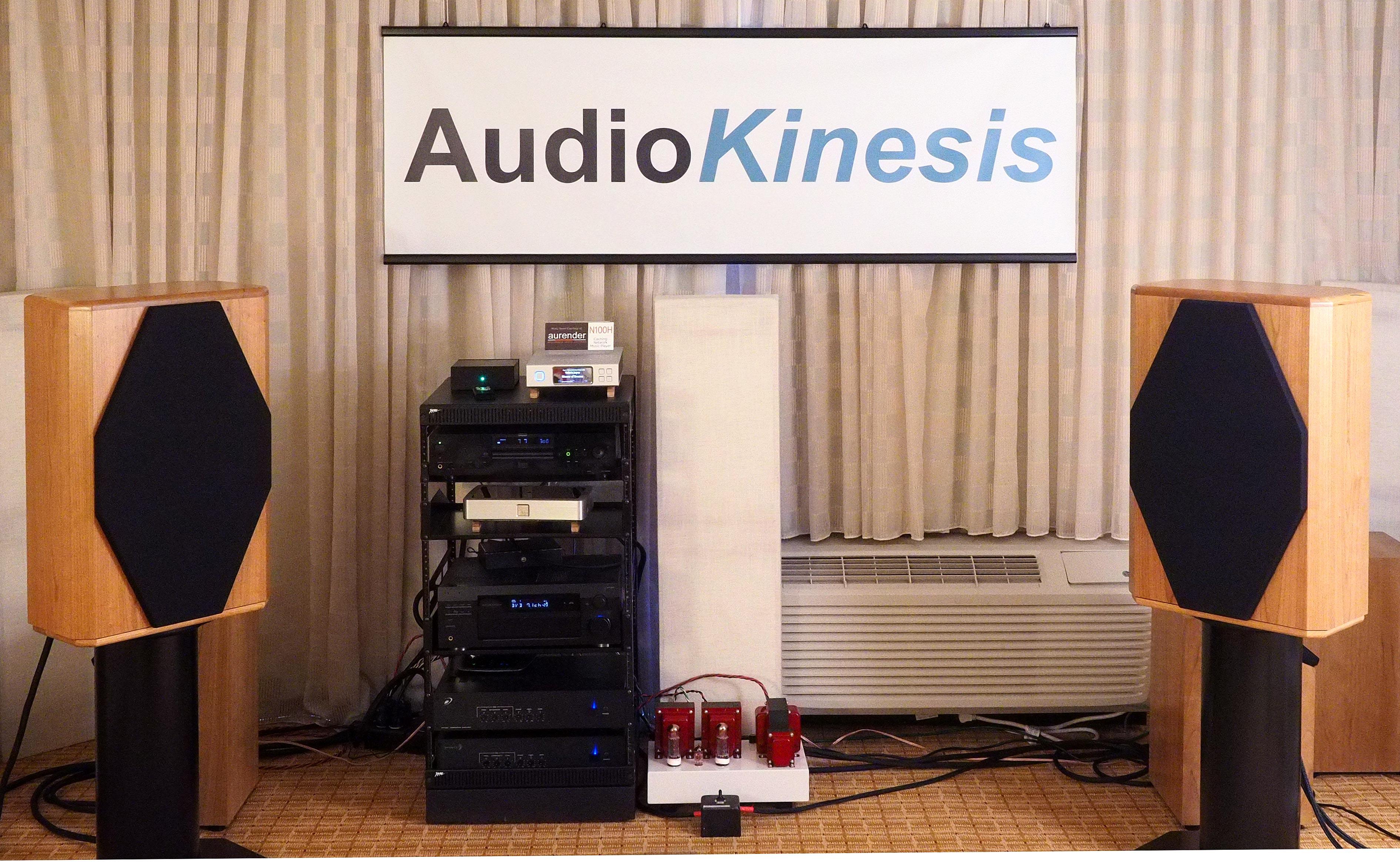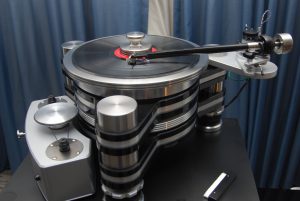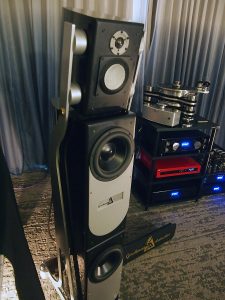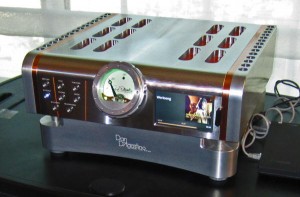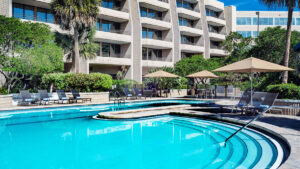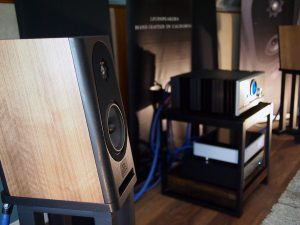
Gaylord Hotel and Convention Center, Denver, CO, 2019 (photograph and image processing by David W. Robinson)
My God, this place is HUGE! The main atrium, with a 5-story window overlooking the Rockies (!), is big enough for medium-sized jet airplane, or a DC-3 at the minimum. Walking distances are comparable to LAX airport… it could really use a people-mover on those long, long corridors. This must be Colorado's first Vegas-scale hotel. In its favor, the staff is friendly and helpful, it's brand-new and looks sharp, and most important, the sonics in the rooms are better than the previous venue. (I think that this venue sounded better than any venue I have attended for any show - Dave Clark, Editor.)
The unexpected hit of the show was Klipsch's debut of their new Heritage Series speaker, the Cornwall 4th Edition. A little bit of backstory; this model goes back to the late Fifties, and has been in continuous production ever since. As I see it (Klipsch fans might disagree), the classic Klipsch speakers come in three families: the Heresy, the Cornwall, and the LaScala/Belle Klipsch/Klipschorn. The last three are all-horn speakers, while the Heresy and the Cornwall are direct-radiator bass with horn mid and high-frequency drivers. I'm never been a big fan of the Heresy, so lets's set that aside… although the current series model is worlds better than the original.
I've always felt the somewhat neglected middle-of-the-line Cornwall never got the attention it deserved, either from Klipsch fans, or mainstream audiophiles. My personal opinion is this model has always been Klipsch's most natural-sounding speaker, while retaining the spectacular Klipsch dynamics and super-vivid tone colors. Well, the new model is really something else, and in my view is not only the best speaker Klipsch has ever made, but I'll go out on a limb and say it's the best-sounding horn speaker you can buy… at any price.
Horn coloration is very low, particularly in the critical midrange, and the speaker uses sophisticated Linkwitz-Riley 4th-order (acoustic) crossovers. I believe this is a first for any horn speaker, although I'm not familiar with the new Klipschorn (which also sounded very, very good indeed). The constant-directivity modified-Tractrix horns work as advertised, and deliver a stable image and very low coloration. No horn shout here.
The bass quality and depth from the 15" Klipsch driver was spectacular, and the dynamics made everything other speaker at the show sound flat and compressed. This is where 102 dB/meter/watt efficiency really shows the difference, just as Paul W Klipsch said for so many decades. He was right; if you want dynamics, you're not going to find it in 300-watt amplifiers and 87 dB/meter/watt speakers. Sorry, it's just not happening. (There isn't mysticism: there are good technical reasons for this, starting with low IM distortion and absence of voice-coil heating, which compresses dynamics.)
However… the traditional downside of horn speakers for the majority of audiophiles has been unacceptable levels of horn coloration, with tinny, honky and forward midrange, sizzly, peaky treble, and a flat spatial presentation. This is the ugly sound of most PA speakers, and we've all heard it and cringed. The better high-efficiency speakers get away from the dreaded PA sound, but there's enough residual coloration that the mainstream audiophile won't accept them into their homes… due to size, colorations, or just a general dislike of that kind of sound. This has resulted in the majority of the market using low-efficiency speakers, in the 85~90 dB range, along with powerful solid-state amplifiers to make them "come alive." The rest of high-efficiency speakers are niche products, aimed at audiophiles who own low-powered tube amplifiers, and they need efficient speakers to listen at realistic levels.
It has been technically possible to design high-efficiency speakers to meet modern standard of flatness, low coloration, and stable imaging, but these are commercially very rare. I've seen few models on the commercial market… you have to go into the deep end of specialist DIY projects to find what modern technology can do. With the introduction of the Cornwall IV, that's changed. You don't have to be a speaker designer.
The Klipsch Cornwall IV is leaps and bounds better than its predecessors. Even so, the three previous models of the Klipsch Cornwall, with just a little bit of tweaking, were already an excellent choice for triode enthusiasts. The new speaker breaks out of that niche: it had the best sound at the show, full stop. It is NOT comparable to the Heresy, except in general overall concept and lineage. The Cornwall IV is a full-fledged audiophile-quality speaker, with dynamics and bass depth that simply aren't available from other high-end speakers. Horn colorations are very low, on some material not audible at all. Remarkably, this system sounded good in the hall as you walked towards the room, and better as you walked in and sat down.
The first, initial impression is the complete lack of strain with dynamic swings, whether playing quietly or quick snaps of percussion. This is a hallmark of any good horn, of course, but hearing it with nearly zero coloration and super-vivid tone colors is something else. In other words, both drum snaps and the singers sounded both natural and realistic. You usually get one or the other … natural, in-the-room singing, or snappy drum transients, but not both. This does both… ultra-fast transients that are physically felt (the opposite of headphone listening), and natural, in-the-room midrange and treble.
The other quality is a hidden, not-well-known virtue of horn speakers: they don't lose resolution and coherence as the sound levels go down. They sound exactly the same at 105 and 55 dB. This is more unusual than it looks: complex multi-way dynamic speakers, particularly the 3 and 4-ways, lose coherence if the sound gets too quiet. That's why a simple full-range driver sounds better on background music… it may not play loud, and may be fairly colored, but the sound doesn't fall apart at quiet background levels. Well-designed horn speakers don't have that problem; there's no loss of resolution, or coherence, as the level gets quieter and quieter. They don't force the audiophile into a preferred listening level where the speaker sounds best.
Enough gushing, but I feel this is not only a classic, but now a landmark speaker as well. Speakers like this are rare… the Quad ESL57, a completely different speaker, is the only other one that comes to mind. Any amplifier from 2 to 60 watts is PLENTY of power; they'll knock you right out of the room. Oh, I almost forgot... the price for a pair of Cornwall IV is $6000, with your choice of traditional wood finishes. (I know, a lot of you love the Heresy. Do yourself a favor and audition their bigger brother. I think you'll be surprised.)




